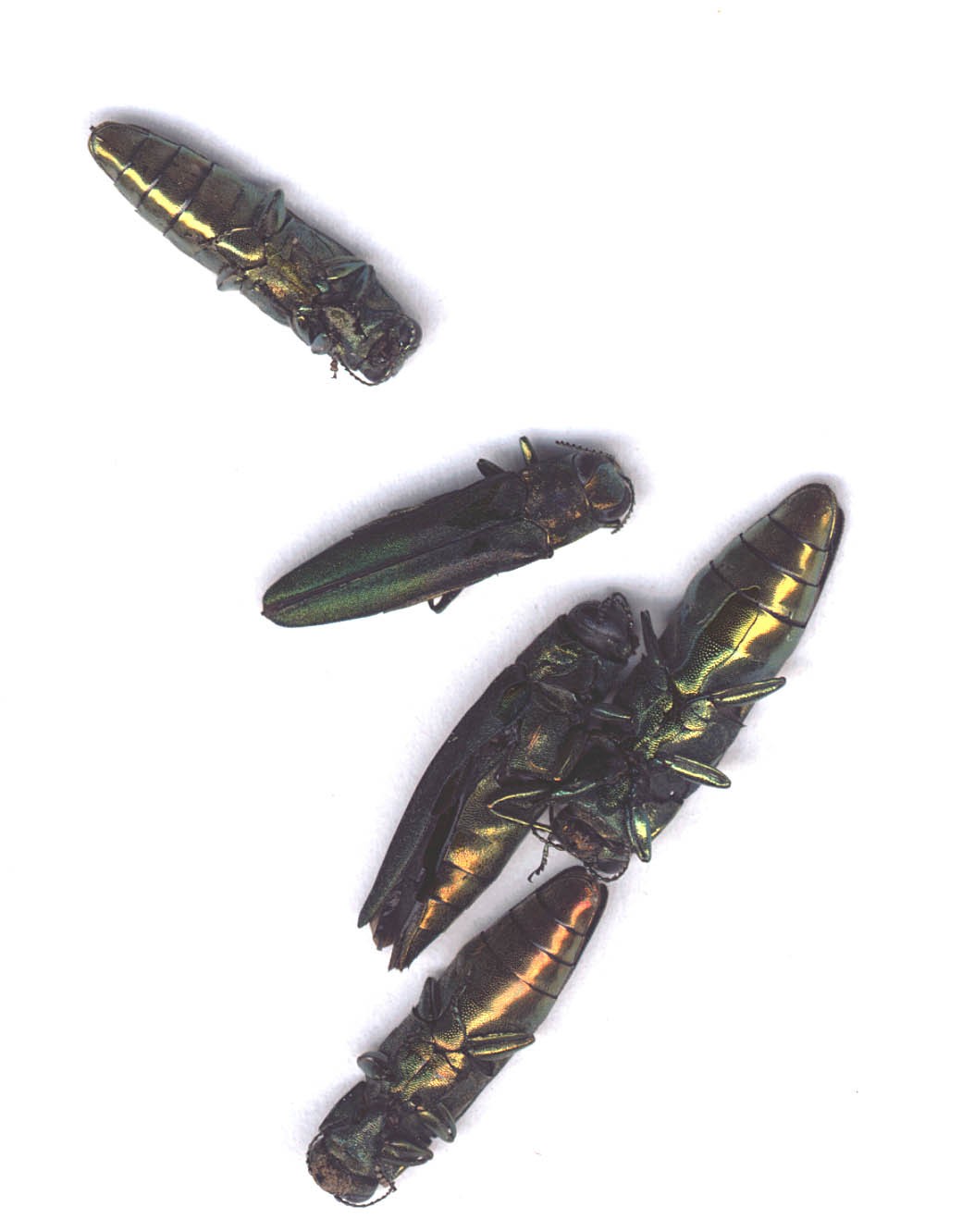By Bill McNee, DNR Forest Health Specialist, Oshkosh, bill.mcnee@wisconsin.gov or 920-360-0942

Early photo of EAB adults taken in June 2002, prior to the insect species being identified. Photo: USDA Animal and Plant Health Inspection Service
The beginning of July marked 20 years since we received news of an unidentified beetle that turned out to be the emerald ash borer (EAB), one of North America’s greatest tree killers. On July 1, 2002, DNR forest health staff received an email from USDA Animal and Plant Health Inspection Service about this beetle being associated with declining ash in southeast Michigan:
This is to notify you that in the past few days we have responded to a report of an insect pest feeding on ash in the western suburbs of Detroit. This follows what has been a series of reports of declining ash in this area over the past couple of years. However, in the past we have not been able to associate it with any particular insect or disease. We are now seeing a boring insect emerging from the infested trees in various sites… The adult, which is emerging now, resembles the shape and size of two lined chestnut borer. It is emerald, metallic green in color and leaves a D-shaped exit hole, similar to bronze birch borer…
Adult beetles from ash logs containing unidentified larvae were confirmed as Agrilus planipennis on July 9, 2002 by Dr. Eduardo Jendek, an insect taxonomist in Slovakia. At the time this insect (later given the name “emerald ash borer”) was little-studied, even in its native range of eastern Asia. By mid-July, the insect had been confirmed in five counties of southeast Michigan. Tree ring analysis later determined that EAB had become established in this area by the early 1990s and was already widespread in the Detroit area by the time it was first identified. A more detailed history can be found here.
EAB was first detected in Wisconsin in Ozaukee County in the summer of 2008, and has since been detected in 65 of Wisconsin’s 72 counties. More Wisconsin EAB information can be found here.
